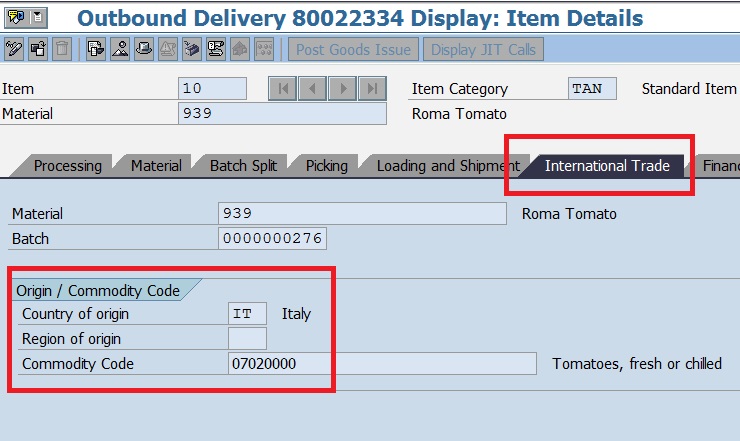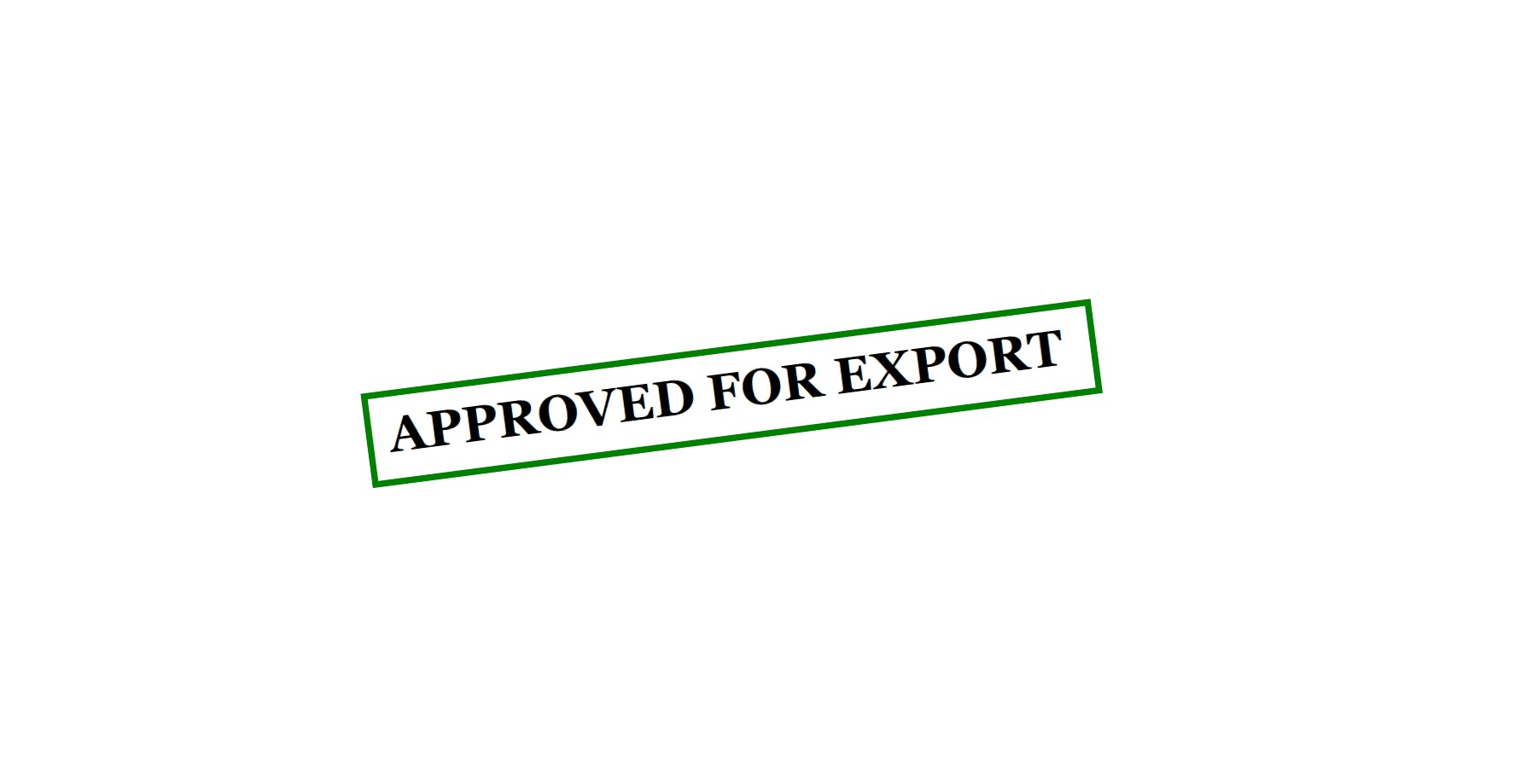S4HANA 2020 – International Trade data in Delivery item – small dressing for a large wound
Technology
Simplification in SAP S/4 HANA brought disappointment to most of the Foreign Trade teams as almost the whole International trade functionality was removed from the S/4 HANA system. It is no more possible to maintain the Foreign Trade data on the transactional level (with small exceptions e.g. maintaining of HS code in purchase order in case of free-text position without material number).
This decision by SAP pushes customers to have high quality master data, where no additional maintenance on transaction basis is required. Assumption from SAP is also that customers using SAP GTS maintain the whole Foreign trade data in GTS.
What’s the issue?
Let’s take an example of intrastat process in a country, where information about Country of Origin is required, but not sufficiently maintained on master data level.
A material (batch-managed) is purchased. Information about Country of Origin is not maintained in the material master nor in purchasing info record, batch is created without Country of Origin. Purchase order, inbound delivery, possibly goods receipt are created.
In SAP R/3 system, the Foreign trade incompleteness check would stop the purchaser or logistician in the process if Country of origin is missing, Foreign trade data and their incompleteness check in S/4 HANA were simplified (= removed ????), so intrastat declaration is created in GTS and BANG! – at first intrastat declaration is incomplete because Country of Origin is missing. The Intrastat responsible in GTS has to go back to purchasing team, poss. logistics team and look for the correct Country of origin. As SAP GTS processes are from time perspective at the very end of the process chain, it can be quite time consuming and causes delays. Similar situation can happen by the import, export or intrastat outbound process.
What’s new?
SAP introduced 3 new SAP Notes in November 2020 as a response to requirement to maintain International Trade data on transactional level:
- 2987725 – Foreign Trade fields ITM_COMCO, SPE_HERKL, SPE_HERKR as summary note that contains:
- 2954883 Positionen: Außenhandelsfelder in Fakturen
- 2927704 Pflege von International-Trade-Daten auf Lieferpositionsebene nicht möglich
The notes technically add the fields – Country of Origin (SPE_HERKL), Region of Origin (SPE_HERKR) andCommodity Code (ITM_COMCO) to the Inbound, Outbound delivery as a new International Trade tab on item level and to the Invoice item as database fields without displaying them in GUI.

New standard behavioral
General important facts about the new fields:
- Fields are editable in the Inbound and Outbound Delivery
- Fields in Inbound and Outbound Delivery are automatically filled out only in case of cross-border shipments, where export indicator LIKP-EXPKZ is set. In case of domestic shipments, fields stay blank.
- Fields from Outbound delivery are transferred to Invoice items (VBRP table).
- Fields are in certain cases considered in Intrastat, as described by SAP
- Fields are NOT transferred to GTS and have no impact to export and import customs declaration or preference!
Country and Region of origin in the Delivery is in case of cross-border shipment taken from the batch or material master and regularly updated, e.g. if batch is assigned to the Outbound delivery in EWM. In case of batch split, Country and Region of Origin is stored only for batch subitems.
HS Code is stored to the Inbound and Outbound Delivery only initially by creation of the document.
During the outbound process, International Trade fields are copied to the Invoice item. There is no field in VF01, VF02, VF03 to display the fields, as it stays only on database level.
Intrastat Inbound logic
International Trade data from the delivery are transferred to Intrastat only if customizing “Define Data Selection Control for Purchasing” is set up to select Inbound Deliveries as Intrastat source.

Country of origin in Intrastat is selected according to priority:
- Select Country of Origin from the Inbound delivery
- If no Country of Origin in the Inbound delivery, select the one from the batch
- If no Country of Origin in the batch, select the one from the Purchasing Info Record
- If no Country of Origin in the Purchasing Info Record, select the one from the Material Master
- If no Country of Origin in the Material Master, Country of Origin stays blank and needs to maintained manually in GTS
HS code in Intrastat is selected according to priority:
- Select HS code from the Inbound Delivery
- If no HS Code in the Inbound Delivery, get it from S/4 (values transferred from GTS)
Intrastat Outbound logic
Intrastat Outbound reads Country, Region of Origin and HS Code from the invoice items (table VBRP) too.
Country of Origin in Intrastat Outbound is selected according to priority:
- Select Country of Origin from the Invoice
- If no Country of Origin in the Invoice, select the one from the batch
- If no Country of Origin in the batch, select the one from the Material Master
- If no Country of Origin in the Material Master, Country of Origin stays blank and needs to maintained manually in GTS
HS code in Intrastat Outbound is selected according to priority:
- Select HS code from the Invoice
- If no HS Code in the Invoice, get it from S/4 (in case of GTS integration values transferred from GTS).
Import, Export, Preference logic in GTS
International Trade fields are not transferred to SAP GTS, they have therefore no impact to any GTS process!
International Trade Data Issues
First issue directs to standard S/4 incompleteness check on delivery item level (transaction OVA2). It is possible to set up the incompletion check for the International Trade data fields in the LIPS table, but there is no possibility to activate the incompletion check only to cross-border shipments or only to subitems in case of batch split. International Trade data are stored to LIPS table only in cross-border shipments. This means using standard S/4 incompletion check, all domestic shipments will be incomplete and by batch split and Country of Origin on batch level, all main items without batch assignment will be incomplete!
Second issue appears in case of material re-classification. HS Code is stored to the delivery only by initial creation of the delivery and not updated anymore. If material is reclassified after the delivery creation, old incorrect HS code will be transferred to intrastat report.
Conclusion
SAP relies on high quality International Trade master data in S/4 and GTS system, without any need to maintain them manually on transactional level. There are still relevant situations where master data are not sufficient, for example free-text items or dummy material numbers. There was no solution where to maintain the required data for Intrastat reporting and SAP provided a very limited solution for exactly these cases.
Why to call it limited solution? The answer is no integration with GTS, inconsistency with standard S/4 incompletion check and further issues (e.g. incorrect HS code in case of material re-classification). The new SAP Notes bring the logic and place in the database where to store the International Trade fields and if GTS integration or incompletion check is requested, these limitations can be resolved by small developments.
Hold Goods Issue until Export Permission exists in SAP GTS
How to implement export permission check in SAP GTS before goods issue when you have several integrated SAP systems
READ MORE







